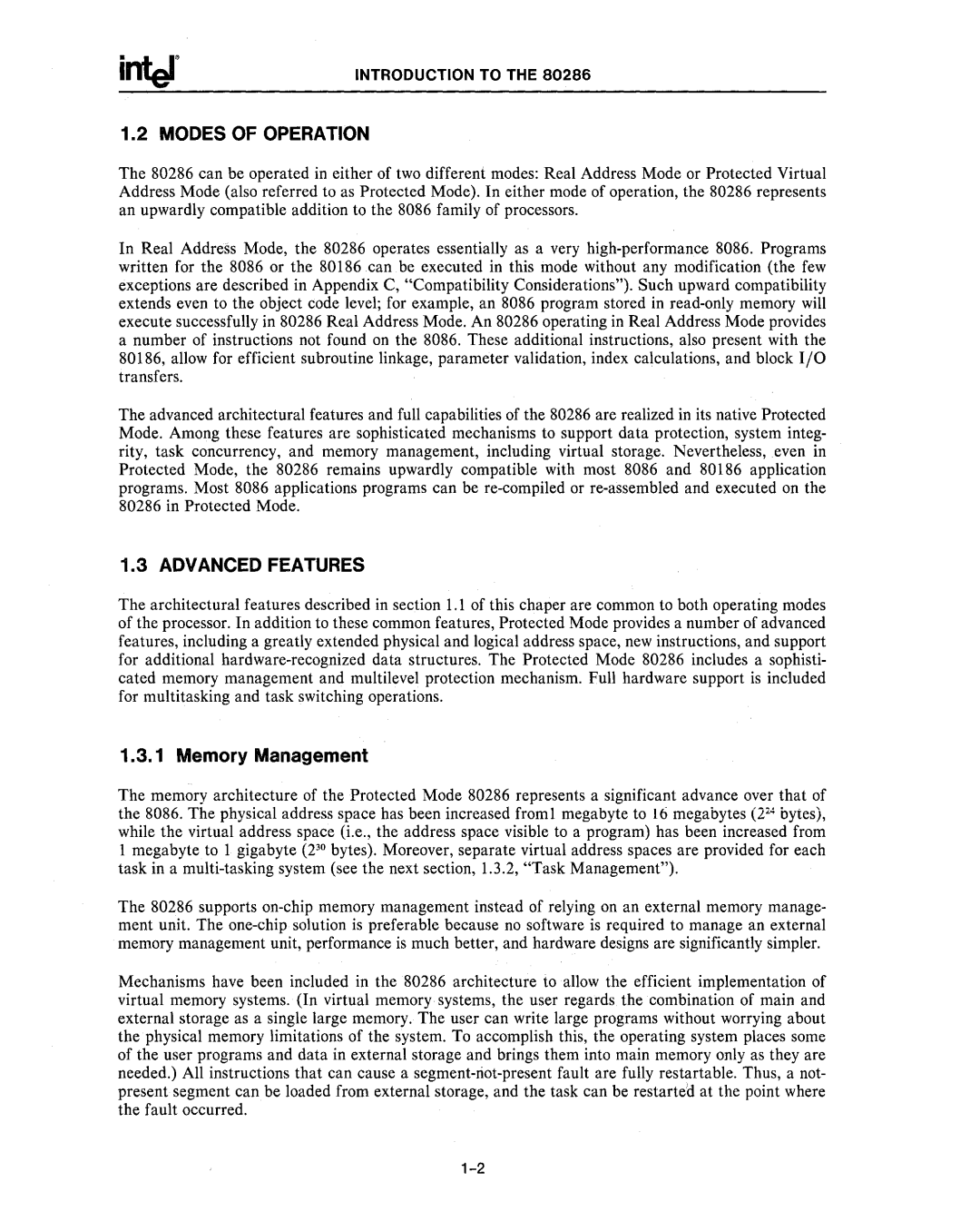
INTRODUCTION TO THE 80286
1.2 MODES OF OPERATION
The 80286 can be operated in either of two different modes: Real Address Mode or Protected Virtual Address Mode (also referred to as Protected Mode). In either mode of operation, the 80286 represents an upwardly compatible addition to the 8086 family of processors.
In Real Address Mode, the 80286 operates essentially as a very
The advanced architectural features and full capabilities of the 80286 are realized in its native Protected Mode. Among these features are sophisticated mechanisms to support data protection, system integ- rity, task concurrency, and memory management, including virtual storage. Nevertheless, even in Protected Mode, the 80286 remains upwardly compatible with most 8086 and 80186 application programs. Most 8086 applications programs can be
1.3 ADVANCED FEATURES
The architectural features described in section 1.1 of this chaper are common to both operating modes of the processor. In addition to these common features, Protected Mode provides a number of advanced features, including a greatly extended physical and logical address space, new instructions, and support for additional
1.3.1 Memory Management
The memory architecture of the Protected Mode 80286 represents a significant advance over that of the 8086. The physical address space has been increased froml megabyte to 16 megabytes (224 byies), while the virtual address space (i.e., the address space visible to a program) has been increased from 1 megabyte to 1 gigabyte (230 bytes). Moreover, separate virtual address spaces are provided for each task in a
The 80286 supports
Mechanisms have been included in the 80286 architecture to allow the efficient implementation of virtual memory systems. (In virtual memory systems, the user regards the combination of main and external storage as a single large memory. The user can write large programs without worrying about the physical memory limitations of the system. To accomplish this, the operating system places some of the user programs and data in external storage and brings them into main memory only as they are needed.) All instructions that can cause a
